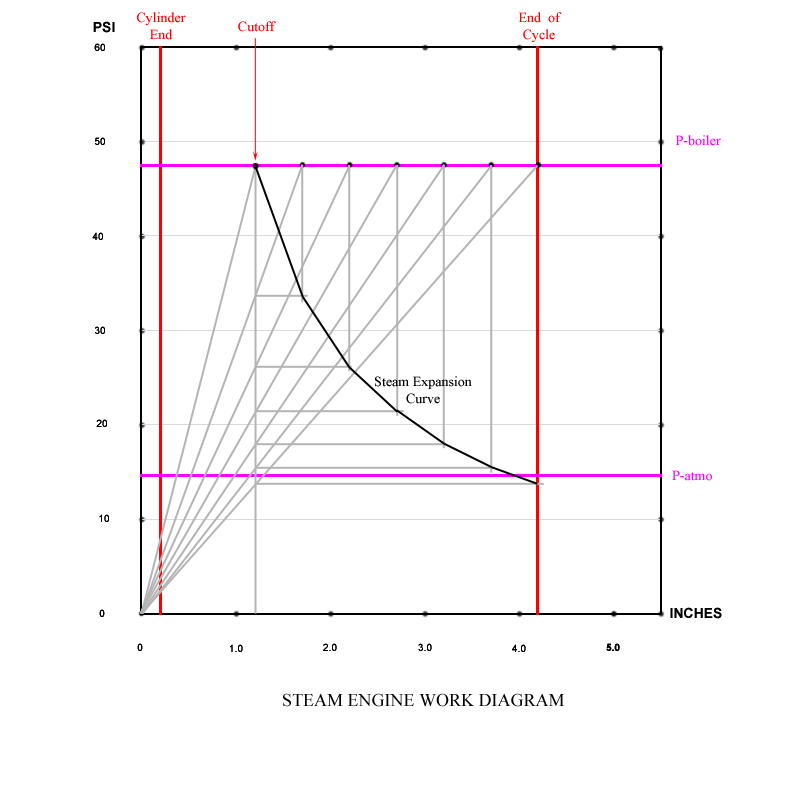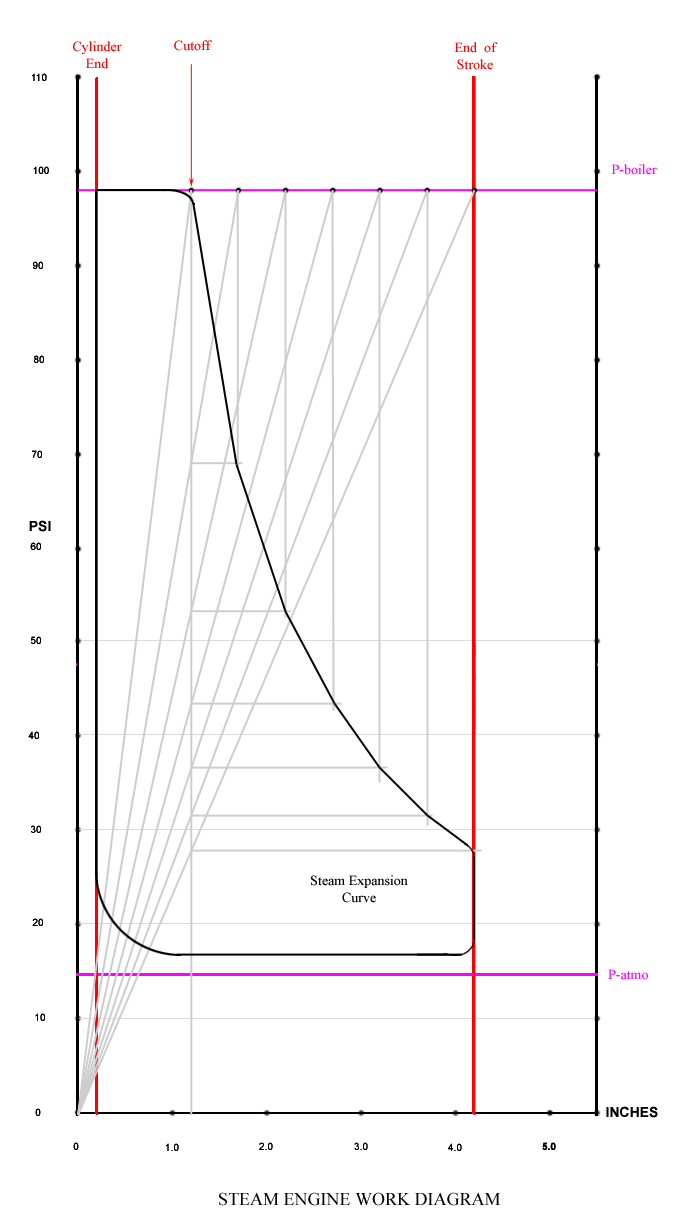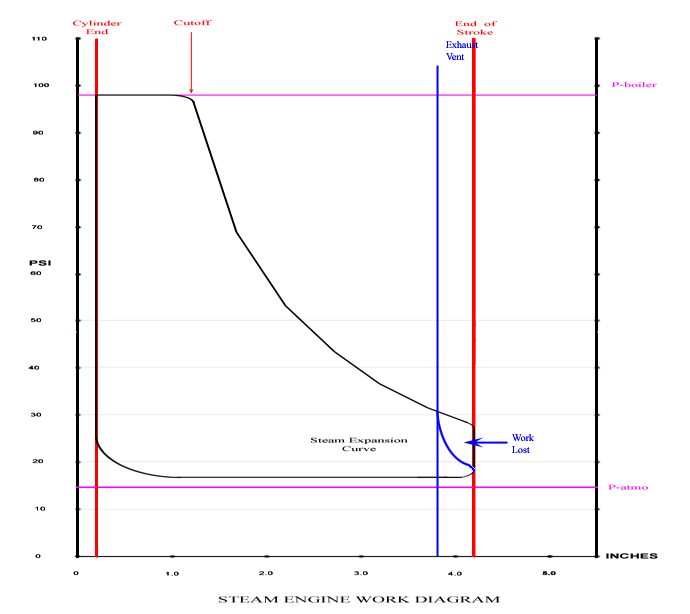Steam Engine Specifications/Work Diagrams
Main > Energy > Steam Engine
Theoretical work diagrams are balanced by taking actual readings from a working steam engine via a device called an engine indicator. This device causes a pen to move as pressure in the cylinder rises or falls. The device is a delicate construct of springs and linkages so as to scale the pressure range to a graphical output. A better approach might be to buy a digital pressure sensor and interface it to a data gathering computer. This has the advantage of being able to collect all data and average the results. It can be also be trigger to collect data once the engine has reached operating speed and temperature.
Design 5
50 PSI Boiler Pressure
Cutoff: 1/4
Bore: 4"
Stroke: 4"
Boiler Pressure: 50psi
Doing such diagrams is quite informative. Note that the expansion curve falls off below atmospheric pressure near the end of the stroke. Naturally, pressure in the cylinder cannot fall below atmospheric pressure, but it could fall to meet it. This is actually not desired. Some amount of back pressure in the cylinder softens the ends of the stroke cycle. This diagram also indicates how long the bump valve pins need to be in order to reach cutoff at 1/4 of the stroke length. Varying this will impact the amount of work produced in one cycle.
100 PSI Boiler Pressure
Cutoff: 1/4
Bore: 4"
Stroke: 4"
Boiler Pressure: 100psi
A more complete work diagram with an operating boiling pressure of 100 psi.
One thing to note about this diagram is that it shows the full length of the piston travel and assumes that steam left in the bore is exhausted at the very end of the travel distance. In the current design, the exhaust vent is opened somewhat before the end of the travel distance. This would affect the work curve above somewhat (a bit of power is lost). Still, some time is needed to exhaust the bore down to atmospheric pressure level. The current design has four steam exit ports, which means (in theory), that pressure would drop fairly quickly (how much time?).
100 PSI with Exhaust Vent
Cutoff: 1/4
Bore: 4"
Stroke: 4"
Exhaust Vent: 3.6"
Boiler Pressure: 100psi
This version (scaled by half vertically) shows a steam exhaust vent at 3.6" into the stroke cycle (from TDC). Steam pressure drops off exponentially (how fast?) until the end of the stroke. Might lose back pressure. Difference in areas between the black and blue curves represents work lost.


